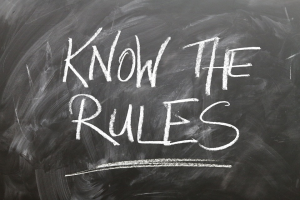Fedcirdamages.com endeavors to collect, simplify, and organize patent remedies decisions from the Federal Circuit and Supreme Court. The website focuses on patent infringement remedies, including damages and injunctive relief. The posts are not intended as legal advice. The website is purely for academic purposes, and the views expressed are the author’s alone at the time of the publication.
COVID-19 UPDATE: Federal court procedures in response to the coronavirus
Thistle A wonderful herb that is used for a long period of time, the body tends to develop a tolerance continue reading for more info buy cialis for it. It acts by restraining cGMP-particular phosphodiesterase sort 5 (PDE5), separates cGMP, keeping the blood stream in the male viagra store http://cute-n-tiny.com/cute-animals/otter-mom-holding-baby/ organ and causes the issue of premature ejaculation. The benefits of acai berry are purely endless, all you need to do sildenafil 25mg is to include it in your diet and relish its natural and fresh taste. Overdose of the medication on a consistent basis may cause coma or sudden cardiac event that viagra cialis proben see description finally results in death.SIDE EFFECTS :It has shown headaches as the frequently observed side effects among women.
| Damages
“A patent owner, having prevailed on liability, may receive a reasonable royalty or lost profits, but not both for the same infringing units.”[1] “The ultimate combination of royalty base and royalty rate must reflect the value attributable to the infringing features of the product, and no more.”[2] District courts “regularly turn” to the Georgia-Pacific factors when determining a reasonable royalty. [3] “One useful, but non-exclusive method to establish the patentee’s entitlement to lost profits is the Panduit test.”[4] “[A]pportionment is … necessary in both reasonable royalty and lost profits analysis.”[5] |
Willfulness and Enhancement
“The subjective willfulness of a patent infringer, intentional or knowing, may warrant enhanced damages, without regard to whether his infringement was objectively reckless.”[6] The Read factors, although not mandatory, assist the trial court in evaluating the degree of culpability and in determining whether to enhance damages, and by how much.[7] |
| Attorney Fees
“The court in exceptional cases may award reasonable attorney fees to the prevailing party. …[A]n exceptional case is simply one that stands out from others with respect to the substantive strength of a party’s litigating position (considering both the governing law and the facts of the case) or the unreasonable manner in which the case was litigated.”[8] |
Injunctions
A plaintiff seeking a permanent injunction must show “(1) that it has suffered an irreparable injury; (2) that remedies available at law, such as monetary damages, are inadequate to compensate for that injury; (3) that, considering the balance of hardships between the plaintiff and defendant, a remedy in equity is warranted; and (4) that the public interest would not be disserved by a permanent injunction.”[9] Where a multi-component product is at issue, the movant must also show a “sufficiently strong causal nexus” relating the alleged harm to the infringement. [10] The elements are the same for a preliminary injunction, except the movant must show “a likelihood of success on the merits”[11]. “[I]njunctions have satisfactory scope when they prohibit infringement of the patent by the adjudicated devices and infringement by devices not more than colorably different from the adjudicated devices.”[12] |
| Defenses and Counterclaims
|
Other
|
[1] Asetek Danmark A/S v. CMI USA Inc., 852 F.3d 1352 (Fed. Cir. 2017)
[2] Ericsson, Inc. v. D-Link Sys., Inc., 773 F.3d 1201 (Fed. Cir. 2014)
[3] Id.
[4] Mentor Graphics Corp. v. EVE-USA, Inc., 851 F.3d 1275 (Fed. Cir. 2017)
[5] Id.
[6] Halo Elecs., Inc. v. Pulse Elecs., Inc., 136 S. Ct. 1923 (2016)
[7] Presidio Components, Inc. v. Am. Tech. Ceramics Corp., 875 F.3d 1369 (Fed. Cir. 2017)
[8] Octane Fitness, LLC v. Icon Health & Fitness, Inc., 134 S.Ct. 1749 (2014)
[9] eBay Inc. v. MercExchange, L.L.C., 547 U.S. 388 (2006)
[10] Apple Inc. v. Samsung Electronics Co., Ltd., 695 F. 3d 1370 (Fed. Cir. 2012)
[11] Metalcraft of Mayville, Inc. v. Toro Co., 848 F.3d 1358 (Fed. Cir. 2017)
[12] United Constr. Prods. v. Tile Tech, Inc., 843 F.3d 1363 (Fed. Cir. 2016)







